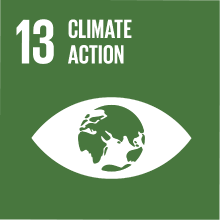BUILDING PHYSICS
- Academic year
- 2025/2026 Syllabus of previous years
- Official course title
- FISICA TECNICA AMBIENTALE
- Course code
- CT0639 (AF:466607 AR:254976)
- Teaching language
- Italian
- Modality
- On campus classes
- ECTS credits
- 6 out of 12 of APPLYED PHYSICS AND ENERGY SYSTEMS
- Degree level
- Bachelor's Degree Programme
- Academic Discipline
- ING-IND/11
- Period
- 1st Semester
- Course year
- 3
- Where
- VENEZIA
Contribution of the course to the overall degree programme goals
It introduces the main engineering applications of fundamental concepts covered in Physics courses (temperature, heat, work, etc.) and the Principles of Thermodynamics. In particular, real thermodynamic cycles (derived from the Carnot cycle) will be analyzed, with a specific focus on electricity generation and refrigeration.
The course will also introduce heat transfer theory, with particular attention to its applications in building structures and heat exchangers used in energy conversion systems.
Finally, the study of heat transfer will extend to understanding human body interaction within confined environments, with reference to air conditioning systems.
Expected learning outcomes
Understand and describe the Zeroth Law of Thermodynamics and the concept of temperature.
Apply the First Law of Thermodynamics for the energy analysis of closed and open systems.
Apply the Second Law of Thermodynamics, interpreting the Kelvin-Planck and Clausius statements and evaluating the efficiency of thermodynamic cycles.
Understand the concept of entropy and its application in thermodynamic systems.
2) Analyze Real Thermodynamic Cycles and Their Applications
Study and interpret the main direct (Rankine, Brayton-Joule) and inverse (refrigeration cycle and heat pump) thermodynamic cycles.
Evaluate the performance of energy production and refrigeration systems through the concepts of efficiency and coefficient of performance (COP).
3) Describe the Behavior of Pure Substances and Ideal Gases
Understand and apply the equation of state for ideal gases.
Analyze thermodynamic diagrams (p-v, T-s, Mollier, etc.) to study the transformations of pure substances.
4) Understand and Apply the Principles of Heat Transfer
Analyze steady-state thermal conduction using Fourier’s law and the concepts of thermal resistance and conductance.
Interpret forced and natural convection phenomena and their impact on engineering applications.
Apply the concept of overall heat transfer and calculate the overall heat transfer coefficient in different configurations.
5) Design and Analyze Heat Exchange Systems
Evaluate the performance of heat exchangers by defining the temperature profile and the Log Mean Temperature Difference (LMTD).
Design concentric tube heat exchangers and assess their thermal efficiency.
6) Apply Thermodynamics and Heat Transfer Concepts to the Built Environment
Understand the thermal behavior of building structures and apply heat transfer principles for the design of thermal insulation systems.
Analyze thermal balance in confined environments and understand the role of thermodynamics in thermal comfort and air conditioning systems.
Pre-requirements
In particular, the following concepts are considered as already acquired: energy, power, heat, work, temperature, Carnot cycle, first law of thermodynamics, and ideal gases.
Contents
- Zeroth Law of Thermodynamics: temperature.
- First Law of Thermodynamics: heat, work, temperature. Closed and open systems. Examples of work in reversible transformations. Internal energy, enthalpy.
- Second Law of Thermodynamics: Kelvin-Planck and Clausius statements. Heat engines. Thermal efficiency. Carnot cycle, Carnot theorem. Clausius equality and inequality. Entropy.
- Ideal gases: equation of state. Specific heat of ideal gases. State functions. Transformations of ideal gases: isobaric, isochoric, isothermal, and reversible adiabatic processes.
- Pure substances: phase diagrams. Gibbs’ Phase Rule. p-v-T surfaces for pure substances. T-v, p-v, and p-T diagrams. Saturated vapor, vapor quality. Superheated vapor and subcooled liquid. Mollier h-s diagram, T-s diagram, p-h diagram. Tables.
- Steam power cycles: Rankine cycle with saturated steam. Rankine cycle with steam reheating. Hirn cycle.
- Gas power cycles: Brayton-Joule cycle.
- Reversed vapor cycles: refrigeration cycle and heat pump. Coefficient of performance. Two-stage compression refrigeration cycle.
HEAT TRANSFER
- Steady-state conduction: Fourier’s law, thermal conductivity of materials. Thermal resistance and conductance.
- Forced and natural convection: definitions and practical use of parameters.
- Overall heat transfer: overall heat transfer coefficient. Applications to building structures.
- Heat exchangers: types, temperature profile, design of concentric tube heat exchangers. Thermal efficiency. Log mean temperature difference (LMTD).
Referral texts
Assessment methods
Each test lasts 1 hour. To pass the exam, it is necessary to achieve at least a passing grade in both tests.
During the numerical test, the student may use a formula sheet that they have personally prepared.
Type of exam
Grading scale
26-27: Good knowledge of the topics covered in lectures; reasonable ability to structure and present information; familiarity with technical terminology. Mostly correct execution of the exercise and correct use of units of measurement.
22-25: Knowledge of the topics covered in lectures is not always in-depth; occasional misuse of technical terminology; answers contain inaccuracies.
18-21: Partial knowledge of the topics covered in lectures, with some gaps; answers are sometimes unclear, with limited use of technical terminology. The exercise is only partially correct.
Teaching methods
2030 Agenda for Sustainable Development Goals
This subject deals with topics related to the macro-area "Climate change and energy" and contributes to the achievement of one or more goals of U. N. Agenda for Sustainable Development


